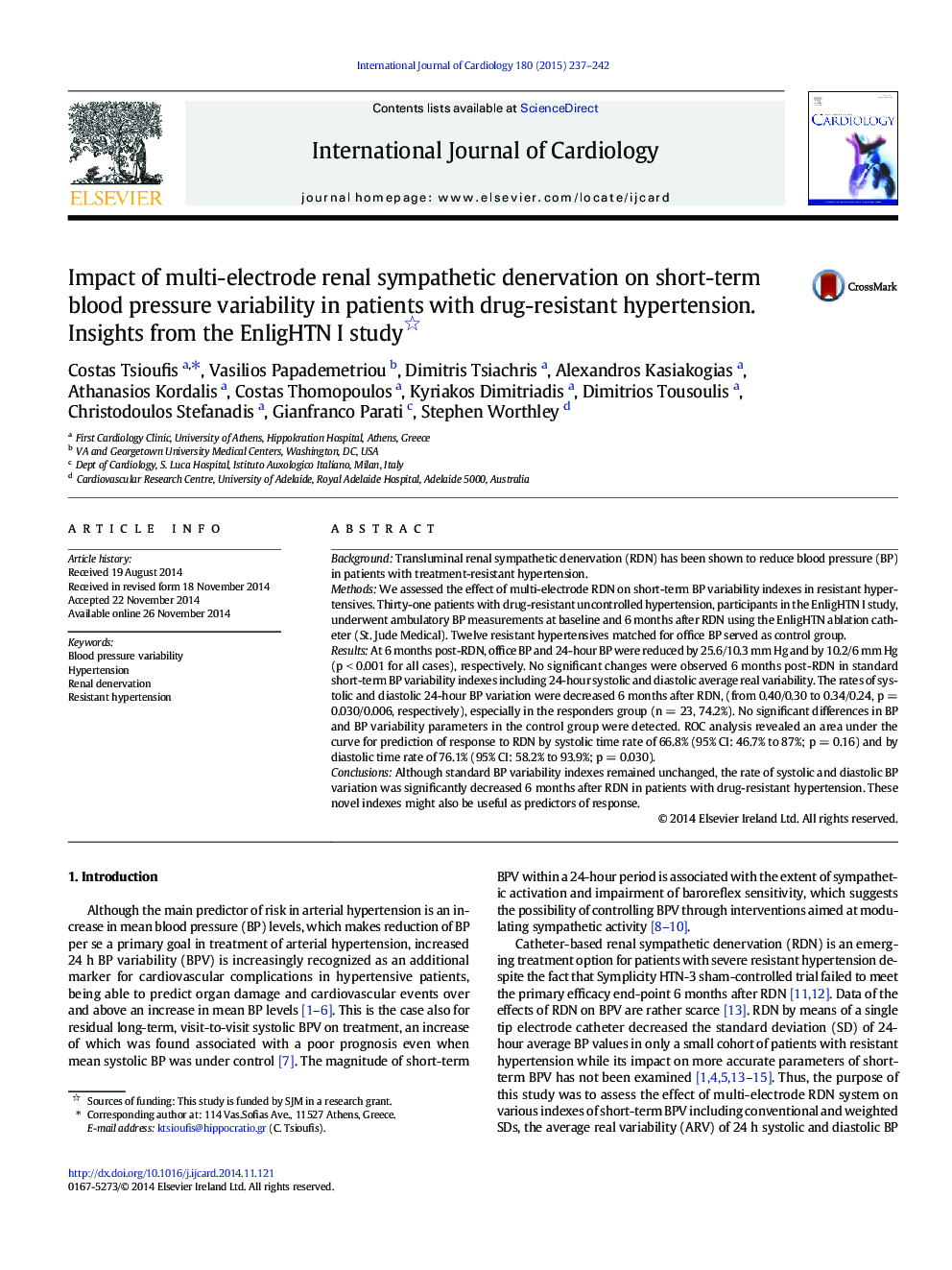| کد مقاله | کد نشریه | سال انتشار | مقاله انگلیسی | نسخه تمام متن |
|---|---|---|---|---|
| 5968767 | 1576172 | 2015 | 6 صفحه PDF | دانلود رایگان |

- RDN reduced office and ambulatory blood pressure in severe resistant hypertensive patients.
- RDN has no effect in short-term BPV indexes but systolic and diastolic time rate are decreased 6Â months after RDN.
- Time rate may serve as predictor of BP response after RDN.
BackgroundTransluminal renal sympathetic denervation (RDN) has been shown to reduce blood pressure (BP) in patients with treatment-resistant hypertension.MethodsWe assessed the effect of multi-electrode RDN on short-term BP variability indexes in resistant hypertensives. Thirty-one patients with drug-resistant uncontrolled hypertension, participants in the EnligHTN I study, underwent ambulatory BP measurements at baseline and 6 months after RDN using the EnligHTN ablation catheter (St. Jude Medical). Twelve resistant hypertensives matched for office BP served as control group.ResultsAt 6 months post-RDN, office BP and 24-hour BP were reduced by 25.6/10.3 mm Hg and by 10.2/6 mm Hg (p < 0.001 for all cases), respectively. No significant changes were observed 6 months post-RDN in standard short-term BP variability indexes including 24-hour systolic and diastolic average real variability. The rates of systolic and diastolic 24-hour BP variation were decreased 6 months after RDN, (from 0.40/0.30 to 0.34/0.24, p = 0.030/0.006, respectively), especially in the responders group (n = 23, 74.2%). No significant differences in BP and BP variability parameters in the control group were detected. ROC analysis revealed an area under the curve for prediction of response to RDN by systolic time rate of 66.8% (95% CI: 46.7% to 87%; p = 0.16) and by diastolic time rate of 76.1% (95% CI: 58.2% to 93.9%; p = 0.030).ConclusionsAlthough standard BP variability indexes remained unchanged, the rate of systolic and diastolic BP variation was significantly decreased 6 months after RDN in patients with drug-resistant hypertension. These novel indexes might also be useful as predictors of response.
Journal: International Journal of Cardiology - Volume 180, 1 February 2015, Pages 237-242